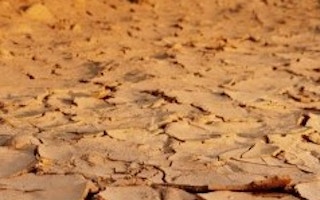All kinds of renewables are being explored through the DESERTEC Concept, but the sun-rich deserts of the world have a special role to play: within time span of six hours, deserts receive more energy from the sun than humankind consumes within one year. Thanks to heat storage tanks, concentrating solar-thermal power plants in the world’s deserts can supply electricity on demand day and night. This means they are an ideal complement to fluctuating energy sources such as wind and photovoltaic power. Thus, increasing the percentage of variable energy sources used in the planet’s electricity mix. What DESERTEC does is to combine climate protection and energy security with economic development and security policy. DESERTEC is a comprehensive solution which not only aims to cover increasing energy needs, but also reduces carbon emissions before global warming gets further out of control. Alongside climate protection and by ensuring the energy supply, it has multiple benefits in terms of development and security – i.e. providing needed seawater desalination. In March of 2012, one year after the nuclear disaster in Fukushima, the DESERTEC Foundation and the Japan Renewable Energy Foundation (JREF) began cooperation to promote an Asian Super Grid necessary for the expansion of renewable energy in Asia. The aim is to accelerate the deployment of renewable energy to provide secure and sustainable alternatives to fossil and nuclear energies. At the signing of the memorandum of understanding in Tokyo, the two non-profits announced that they will exchange knowledge and know-how to coordinate their work together in developing suitable framework conditions for the deployment of renewables and to establish transnational cooperation in Greater East Asia. The Asian Super Grid initiative will facilitate an electricity system based fully on renewable energy in Asia. This initiative envisions the interconnection of the national grids of Japan, China, Korea, Mongolia, and Russia with low-loss High-Voltage Direct Current (HVDC) transmission lines. These transmission lines will enable the delivery of electricity from the region’s most abundant renewable energy sources to its centers of demand. It also simultaneously balances out the peaks and troughs of fluctuating renewable energy sources over a wider area. Click here to read the story.
DESERTEC Foundation Begins Work on Asian Super Grid for Renewable Energy

Most popular
-
![Officer workers in Singapore CBD]()
News / Policy & Finance
Singapore rolls out new industry benchmark for sustainable finance skills
As the city-state seeks to expand its sustainable finance workforce over the next few years, the sector’s national … -
News / Policy & Finance
‘There shouldn’t be an international tradeable unit of biodiversity’: The Nature Conservancy CEO
Jennifer Morris, who heads up the global conservation outfit, rules out preserving nature through internationally traded biodiversity credits … -
![A single-use plastic soup spoon in use in HK]()
News / Waste Management
Hong Kong single-use plastic ban stirs debate over affordability of alternatives
The city's disposable tableware ban which comes into force today has spooked small retailers who fret about the … -
![The Liveability Challenge 2024_winners]()
News / Carbon & Climate
Innovations in cricket protein and aviation fuel win The Liveability Challenge 2024
Ideas from Vietnam and the Netherlands claimed the grand prizes at the sustainability innovation competition for the first … -
![Solar_Installation_Panels]()
News / Energy
Asean could save up to US$800 billion on decarbonisation costs through fully interconnected grid, study shows
The new research findings coincide with Malaysia’s launch of its renewable energy exchange platform and new guidelines for … -
![Asia Centre of Carbon Excellence]()
News / Carbon & Climate
South Pole and GenZero launch new centre to scale ‘high-impact first-of-a-kind’ carbon credits in Asia
Co-led by two senior South Pole staff, the Singapore-based Asia Centre of Carbon Excellence seeks to grow nascent …
















